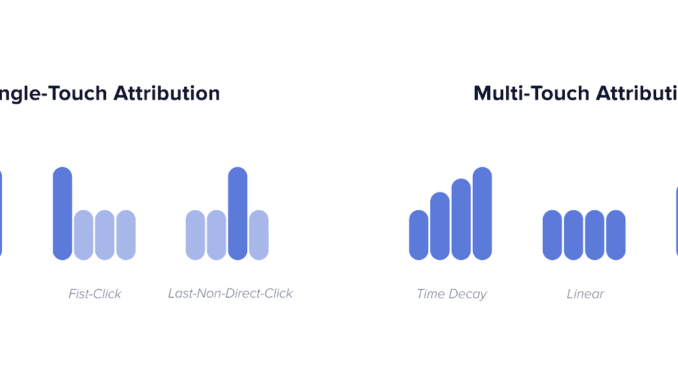
Multi-touch attribution models for advertising make it easier for businesses to understand the specific marketing approaches that shape customer decisions. More importantly, this approach to marketing attribution identifies the strategies that most affect the different stages of the customer journey.
The insights gleaned through multi-touch attribution modeling empower business owners to redirect marketing dollars and efforts toward channels that drive sales.
Multi-touch Attribution Encompasses a Variety of Channels
Multi-touch attribution modeling aggregates data from numerous channels to provide a look at how they cumulatively impact ensuing conversion. The logic in using the multi-touch approach is that it pinpoints the channels that perform the best including those that played a part in assisting conversions. However, there is a flaw in the multi-touch attribution strategy as it requires additional planning and analysis compared to standard analytics.
Employ the multi-channel approach at your business and you’ll enjoy the benefits of reconciling data across a wide array of channels and campaigns into a comprehensive picture. The aim is to align campaign variants for overarching efficacy. Keep in mind, it typically takes half a dozen or more interactions with prospects to build enough momentum for conversion.
The multi-touch attribution approach recognizes the necessity of multiple interactions, spanning the quantitative aspects of:
- Generating initial awareness
- Customer consideration
- The commitment to make a purchase
The multi-touch attribution model takes traditional sales funnel analysis to the next level, empowering businesses to map additional customer journey steps. The result is a comprehensive look at the entirety of the picture of conversion.
Decode Success for Efficient Ad Spending
The breadth of advertising shapes consumer perception and ensuing actions. Instead of crediting the entirety of conversion to the initial point of contact or final point of contact, opt for the multi-touch approach and you’ll have a better understanding of the relationships between your advertising efforts and conversions. Such information empowers you to optimize your advertising budget accordingly.
Once the entirety of the picture is painted through multi-touch attribution modeling, you can better understand the return on your ad spend under individual campaigns. In some instances, it is possible to refine the analysis to specific keywords and additional details. It is these details that provide the insight necessary for accurate measurements, sales funnel improvement, and an eventual increase in sales.
Multi-Touch Attribution is not Without Flaw
Though multi-touch attribution provides a comprehensive view of the paths prospects take toward conversion, it has a couple of drawbacks. The multi-touch attribution model typically functions with a web-based analytics app that plucks data from several interlinked sources. However, such advertising mixtures offer limited opportunities for analysis, often overlooking the following avenues:
- Social channels
- Promotional events that occur offline
- Word-of-mouth references and more
The multi-touch attribution approach is also flawed in that it does not account for important revenue obtained from current customers who converted outside of channels that are analyzed within the multi-touch paradigm.
Add in the fact that the model has temporal constraints such as an average “lookback window” of three months for attribution and there is all the more reason to consider using several models. In particular, businesses with lengthy sales cycles find a mixture of attribution models optimal as a combination paints a comprehensive long-term picture of sales drivers.
Try the Multi-Touch Attribution Model at Your Business
The strengths of the multi-touch attribution model outweigh the weaknesses. Recognize that most customers interact with companies across a litany of channels before converting, employ the multi-touch attribution approach and you’ll gather a significant amount of valuable data spanning relevant touchpoints. Such a detailed analysis of the customer journey toward the finish line of conversion provides an overarching picture of the most important factors that persuade customers to convert.
Begin by employing a linear multi-touch attribution model that provides equal credit to all customer journey steps. The linear attribution model offers a big-picture analysis of the buyer journey though it does not highlight the specific touchpoints that most influenced conversion.
There is also the option of progressing to the time decay version of the multi-touch attribution model. Time decay attribution awards more credit to the touchpoints before conversion. The time decay model rests upon the assumption that interactions that occur closest to the final sale greatly influence the decision to buy.
Businesses also have the option of employing the U-shaped multi-touch attribution model. The U-shaped multi-touch model for attribution awards more credit to the initial and final customer journey stages, emphasizing their importance in drawing prospects in and nudging them across the finish line.

Be the first to comment